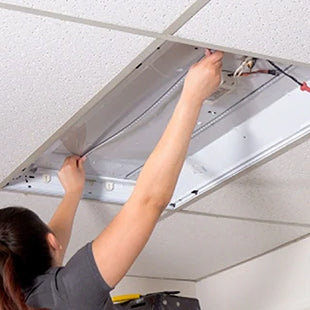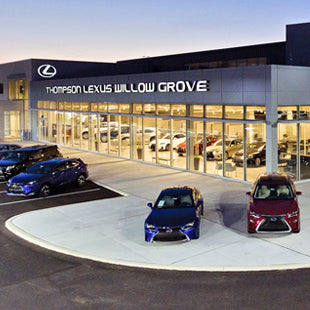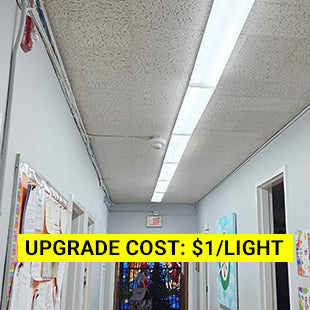Debunking Common Myths and Misconceptions About LED Lighting
LED lighting has come a long way since its inception. No longer a niche option, it's become increasingly common for commercial properties, both indoors and out. Despite its growing popularity, lingering myths and misconceptions about LED lighting may deter some businesses from making the switch. This can stick a business with unnecessarily high energy bills, making it more difficult to compete against companies that have embraced the new technology.
This article aims to debunk some of these common misconceptions and provide a clearer understanding of the benefits that LED lighting can offer.
Myth 1: LED Lighting Is Too Expensive
While it's true that the initial cost of LED lighting may be higher than traditional lighting options, such as incandescent or fluorescent bulbs, the long-term savings far outweigh the upfront investment.
Plus, there are ways businesses can bring the initial cost down. Many utility companies offer financial incentives or rebates for commercial account holders who upgrade to energy-efficient lighting systems. Tax credits are also available to businesses. Programs like these can significantly reduce the upfront cost of the transition.
[Find out if your business qualifies for energy efficiency rebates on lighting]
LED lights consume significantly less energy, producing instant savings in utility bills. They also have a longer lifespan, resulting in fewer replacements and lower maintenance costs over the life of the lights. Over time, the cost savings from reduced energy consumption and maintenance pays back the initial expense several times over, making LED lighting a smart investment for businesses.
Myth 2: LED Lights Have Poor Light Quality
The myth that LED lights produce poor quality light likely stems from early LED technology and some people's experiences with low-quality LED products. Advancements in materials, design, and manufacturing have led to the production of high-quality LED lights that can produce light comparable to or better than traditional lighting.
LED lights are also now available in a wide range of color temperatures, from warm to cool white. Modern LED lights can also have a CRI (color rendering index) rating of 80 or above, with some reaching a CRI of 90 or higher, which is considered excellent for color rendering. Keep in mind that the higher the CRI, the lower the light's efficiency. This tradeoff is worth it for applications where color rendering is crucial, such as an art gallery. For most common indoor applications, a CRI around 80 provides an excellent balance of color rendering and energy savings.
Myth 3: LED Lights Are Not Compatible with Existing Fixtures
It's a common misconception that switching to LED lighting requires a complete overhaul of existing light fixtures. In reality, LED replacement lamps and retrofit kits are designed to be compatible with traditional fixtures, making the transition to LED lighting relatively seamless.
LED replacement lamps, for example, are specifically designed to fit existing sockets, allowing for a simple and cost-effective upgrade. Usually, the most complicated part of that kind of upgrade is "bypassing" the ballast, which is where you disconnect power from the fixture's ballast in order to connect it directly to the fixture's socket(s). This is a simple procedure that only takes a moment or two per socket. Additionally, there are LED retrofit kits available for more complex fixtures, such as recessed or cove lighting, which can make the switch even more accessible for commercial properties.
You also don't have to convert your existing fixtures to LED—replacing them with all-new, all-LED fixtures is always an option as well. But if your aim is to make your existing fixtures more energy efficient, retrofitting them with LED lamps or retrofit kits is a straightforward task.
Myth 4: LED Lights Don't Work with Dimmer Switches
While early LED bulbs may have had compatibility issues with dimmer switches, modern LED lights are designed to work seamlessly with a wide range of dimming systems. It's important to note that not all LED bulbs are dimmable, so be sure to check the product specifications before purchasing.
For the best results, it's recommended to use dimmer switches specifically designed for LED lighting, as these are optimized for the lower power consumption and unique characteristics of LED lights. You'll get the best and most reliable performance with those.
Myth 5: LED Lights are Harmful to the Environment
Some people believe that LED lights are harmful to the environment due to the use of certain materials in their production. In reality, LED lights are more environmentally friendly than traditional lighting options:
- LED lights reduce the overall carbon footprint of a building by consuming significantly less energy.
- They produce less waste from bulb replacement, due to their much-longer lifespan (2X the lifespan of fluorescent bulbs, up to 5X that of metal halide, and 50X that of incandescent bulbs).
- Additionally, LED lights do not contain hazardous materials such as mercury, which is found in some traditional lighting options like fluorescent and compact fluorescent lamps (CFLs).
With improved light quality, compatibility with existing fixtures, and long-term cost savings, LED lighting is an environmentally friendly and economically sound choice for businesses looking to upgrade their lighting systems. By carefully planning and strategizing the transition to LED lighting, businesses like yours can afford the initial investment and enjoy the long-term benefits of reduced energy consumption, lower maintenance costs, and a more sustainable, eco-friendly lighting solution.
Ready to Consider a Lighting Upgrade of Your Own?
ELEDLights has been helping companies switch to LED lighting for more than a decade. We've helped companies save big with energy efficiency incentives, minimize the disruption of the upgrade, and improve their lighting performance across the board. Contact us about your lighting upgrade needs today:
{formbuilder:NzEyOTM=}





